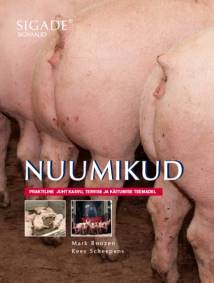Nuumikud
A practical guide to growth, health and behaviour
Languages
Description
For the pork producer, the top priorities are growth and feed conversion. But managing a finishing pig operation requires more than just providing good feed. Raising healthy, peaceful pigs is at least as important, and the livestock manager can also have a great deal of control over these aspects. His aim is not simply to 'keep' finishing pigs, but to get them to the proper weight as quickly and efficiently as possible. This means constant monitoring and control: find rough areas in the operation and smooth them out before they turn into problems.
Achieving good results starts before setting in the piglets. This means making deliberate choices beforehand: select a type of pig that is compatible with you and your farm, choose between liquid feed or dry feed and outline a veterinary health strategy.
The key to success is alert observation during your inspection rounds. Is the daily gain too slow? Do you see an arched back or tear staining on the snout? Are the pigs agitated? These signals can indicate problems. Do not limit your observations to the pigs. The building and the feed also provide signals. Do you feel a draught? Does the feed smell good?
Finishing Pigs shows that what you think is ‘normal' does not always have to be normal. Some managers accept having a few pigs with diarrhoea, while others do not. What are your target values? Finishing Pigs is full of practical tips. It is written clearly and illustrated with informative photographs and beautiful drawings. After reading this book, you will be more alert and you will respond better to signals. And you will return to the barn with renewed energy!


